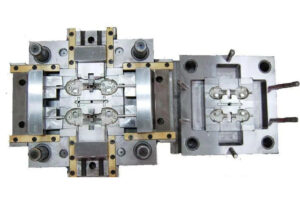Ensuring Optimal Performance through Die Casting Die Maintenance

Die casting is a prominent manufacturing process used across various industries, enabling the production of complex and precise metal components. The quality and longevity of die cast parts heavily rely on the maintenance of the die casting dies. Regular maintenance and proper care not only ensure optimal performance but also extend the lifespan of the dies. In this article, we will delve into the importance of die casting die maintenance and provide insights into the best practices to enhance productivity and efficiency.
1. Maximizing Die Casting Die Lifespan:
Die casting dies are subjected to high temperatures, pressures, and repeated cycles during the manufacturing process. Thus, regular maintenance is crucial to prevent premature wear, cracks, or other issues that might affect the die’s performance and lifespan. By implementing a comprehensive maintenance plan, manufacturers can maximize die casting die durability, avoiding costly replacements and downtime.
2. Cleaning and Lubrication:
Regular cleaning is essential to remove dirt, debris, and residues from the die casting dies. This ensures smooth operation and prevents the buildup of contaminants that can adversely affect part quality. Additionally, lubrication plays a vital role in reducing friction and wear between the die and the molten metal. Applying the appropriate lubricants at recommended intervals improves the die’s performance and prolongs its lifespan.
3. Repairing and Reconditioning:
Over time, die casting dies may develop minor damages such as cracks, erosion, or wear on critical areas. It is important to identify these issues early on and undertake necessary repairs promptly. Reconditioning, including grinding or polishing damaged surfaces, helps restore the dies’ original dimensions and extends their useful life. Partnering with experienced technicians for die repairs can provide efficient solutions and minimize production interruptions.
4. Monitoring and Maintenance Schedule:
Implementing a well-defined monitoring system allows manufacturers to regularly inspect the die casting dies and identify any potential problems. Monitoring can involve measuring critical dimensions, inspecting surfaces for wear or damage, and monitoring die temperature during the casting process. By establishing a maintenance schedule based on equipment usage and production volume, manufacturers can proactively address issues, ensuring uninterrupted production while reducing long-term costs.
5. Die Storage and Handling:
Proper storage and handling of die casting dies are crucial to preserve their performance. Dies should be stored in a clean and controlled environment to prevent corrosion and contamination. It is important to handle the dies with care, avoiding impacts or mishandling that can result in damages. Using protective coatings and packaging during storage or transportation can further safeguard the dies’ integrity.
Die Casting Die Maintenance Conclusion:
Die casting die maintenance plays a significant role in ensuring optimal performance, longevity, and cost-effectiveness in the manufacturing process. Through regular cleaning, lubrication, repair, and monitoring, manufacturers can minimize downtime, enhance part quality, and extend the useful life of their dies. By implementing comprehensive die casting die maintenance practices and partnering with experienced professionals, companies can achieve consistent productivity, efficient operations, and maintain a competitive edge in the industry.






